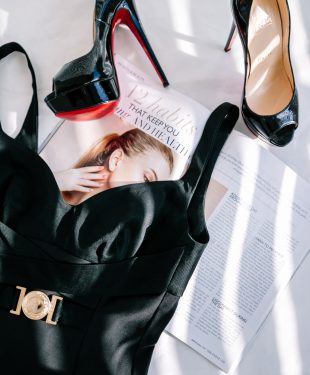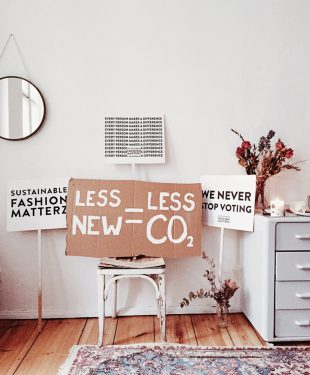Luxury fashion is booming and is only expected to continue growing in the years to come. According to several industry experts, the luxury fashion market is on track for significant growth in 2022. This can be attributed to many factors, including rising income worldwide and increased millennial demand. So if you’re looking to enter this lucrative industry, now is the time! This article will take a closer look at the worldwide luxury fashion market and what’s driving its growth.
The world of luxury fashion
A place where the rich and famous go to spend their hard-earned money on designer clothes, shoes, and accessories. It’s a world often out of reach for the average person. But what if I told you that luxury fashion is booming and will only get bigger? Here are some quick facts:
- The luxury fashion industry is expected to reach $153 billion by 2026.
- Global sales of luxury fashion grew by 11 percent in 2017.
- The number of millionaires and billionaires is expected to increase by 30 percent over the next decade.
 The growth of the luxury fashion industry is good news for the economy as it means more jobs and more money circulating. In addition, the industry is also driving up model salaries, which is good news for those in the industry. With the industry expected to proliferate, it’s an exciting time for the economy. Some of the main reasons for this optimistic outlook include the following:
The growth of the luxury fashion industry is good news for the economy as it means more jobs and more money circulating. In addition, the industry is also driving up model salaries, which is good news for those in the industry. With the industry expected to proliferate, it’s an exciting time for the economy. Some of the main reasons for this optimistic outlook include the following:
- The global economy is improving, resulting in increased disposable income for consumers.
- The rise of the middle class in developing countries is creating a new market for luxury goods.
- Innovation and technology make it possible for brands to reach new markets and connect with consumers in new ways.
- Sustainability is becoming increasingly important for consumers, and luxury brands respond with sustainable manufacturing practices.
Who is buying luxury fashion?
It’s not just the rich and famous who are buying luxury fashion. A growing number of middle-class consumers are also splurging on designer items. Millennials are one of the biggest drivers.
There are a few different types of luxury fashion consumers:
- Firstly, some traditional buyers are typically older, wealthy individuals. They tend to be brand loyal and willing to pay for the highest quality items.
- Then there is the new breed of luxury fashion consumers who are younger, more style-conscious, and more price-sensitive. They are more likely to mix and match designer pieces with more affordable items.
- And lastly, some aspirational consumers don’t necessarily have the means to buy luxury fashion but aspire to do so. They are often influenced by celebrities and social media influencers who wear designer clothes.
What is driving the growth of luxury fashion?
 A few factors are driving the growth of luxury fashion:
A few factors are driving the growth of luxury fashion:
- There is a growing number of millionaires and billionaires worldwide.
- There is an increasing appetite for luxury fashion among younger consumers.
- The globalization of the luxury fashion industry is playing a significant role in its growth.
As incomes continue to rise in developing countries, we can only expect the demand for luxury fashion to grow even further. So if you’re thinking about buying some designer clothes, now is the time to do it.
One of the key drivers of luxury fashion growth is the rise of the “affordable luxury” customer. This is a new breed of consumer who is younger, more style-conscious, and more price-sensitive. As a result, they are more likely to mix and match designer pieces with more affordable items. Who knows? In a few years, you might be able to say that you were ahead of the curve.
How much do models get paid?
This question often pops into people’s minds when they see luxury fashion brand advertisements. While some models may make millions of dollars annually, others may only make a few hundred dollars per shoot. This is a difficult question to answer definitely because there are a lot of variables involved. For example, how experienced the model is, what kind of job it is, where it is taking place, and so on. However, we can make some generalizations.
According to The Highest Paid Models in 2022, the top-earning models worldwide make upwards of $20 million per year. At the lower end of the spectrum, models can expect to make around $100-$300 per hour for print work and $200-$500 per day for runway shows.
So, it is clear that according to this source, there is a lot of money to be made in the fashion industry – both for the models and for the designers, agencies, and other businesses involved.
Luxury fashion brands to watch

Photo by Birgith Roosipuu on Unsplash
A number of luxury fashion brands are worth watching in the coming years. These brands are at the forefront of design, innovation, and customer service and are poised to take advantage of the growing demand for luxury goods.
Some popular luxury fashion brands include Gucci, Louis Vuitton, Hermes, Prada, and Chanel. These brands are known for their high-quality products, impeccable craftsmanship, and exclusive designs.
In addition to these well-established brands, several newer luxury brands are making a name for themselves in the industry. These brands, such as Burberry and Stella McCartney, are known for their modern designs, innovative materials, and sustainable manufacturing practices.
As the demand for luxury goods continues to grow, so does the need for new and exciting luxury brands. These brands are not only meeting consumers’ needs but also driving the industry forward with their cutting-edge designs and commitment to quality. The future of luxury fashion is looking bright, and there are reasons why.
How sustainable is luxury fashion?
Luxury fashion is not as sustainable as it could be. The industry relies heavily on natural resources, and the manufacturing process often creates a large carbon footprint. In addition, luxury brands often use unsustainable materials, such as fur and leather, in their products.
However, several luxury fashion brands are working to change this. These brands are investing in sustainable practices, such as using recycled materials and investing in renewable energy. They are also working to reduce their overall carbon footprint.
Brands must focus on sustainability as the demand for luxury goods continues to grow. This will benefit the environment and create a more sustainable business model for the future.
The ethical concerns of luxury fashion
Luxury fashion has come under fire in recent years for several ethical concerns. These include child labor, forced labor, and unsafe working conditions.
However, several brands are working to address these concerns. These brands invest in ethical manufacturing practices, such as fair trade certification and audits. They also ensure their products are made in safe and humane working conditions.
Brands must focus on ethics as the demand for luxury goods continues to grow. This will benefit the workers and create a more sustainable business model for the future.
What are the challenges facing luxury fashion brands?

Photo by Cherie Birkner on Unsplash
Luxury fashion brands are facing many challenges. Firstly, the global economy is volatile, which can lead to demand fluctuations. Secondly, luxury brands are often associated with elitism and exclusivity, alienating some consumers.
Finally, luxury fashion brands are under pressure to become more sustainable and ethical. This means they must invest in sustainable manufacturing practices and ensure that their products are made in safe and humane working conditions.
Despite these challenges, the future of luxury fashion is looking bright. Thanks to the growing global economy and the rise of social media, luxury fashion is more accessible than ever before. In addition, luxury brands are becoming more environmentally conscious and investing in sustainable practices. This means that consumers can feel good about purchasing products from these brands knowing that they are not contributing to environmental degradation.
Luxury fashion and inclusivity
One of the challenges facing luxury fashion brands is inclusivity. However, several brands are working to change this. These brands focus on creating products that are accessible to a broader range of consumers. They are also investing in marketing campaigns that focus on inclusivity and diversity.
As the demand for luxury goods continues to grow, brands need to focus on inclusivity. This will benefit the consumers and create a more sustainable business model for the future.
The future of luxury fashion
It is looking bright for several reasons. Firstly, the global economy is expected to rebound in the coming years, increasing disposable income. This will allow more people to purchase luxury goods and create opportunities for new brands to enter the market.
Secondly, social media and online shopping have made luxury fashion more accessible than ever. Consumers can now easily find and purchase items from their favorite brands without traveling to a brick-and-mortar store.
Finally, luxury fashion brands are becoming more environmentally conscious and investing in sustainable manufacturing practices. This means that consumers can feel good about purchasing products from these brands knowing that they are not contributing to environmental degradation.
The future of luxury fashion is looking bright. Thanks to the growing global economy and the rise of social media, luxury fashion is more accessible than ever before. In addition, luxury brands are becoming more environmentally conscious and investing in sustainable practices. This means that consumers can feel good about purchasing products from these brands knowing that they are not contributing to environmental degradation.
Read more fashion articles at ClichéMag.com
Images provided by Flickr, Unsplash, Pexels, Pixabay & Creative Commons



